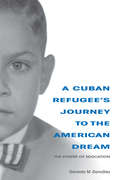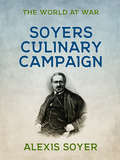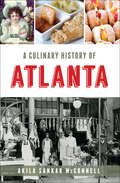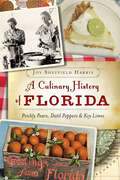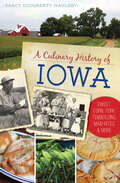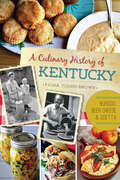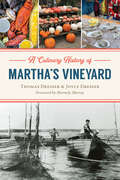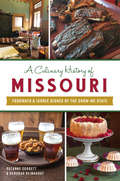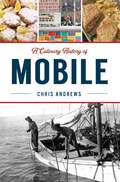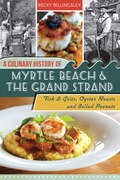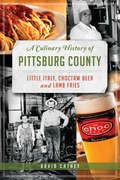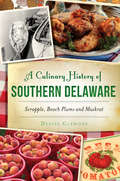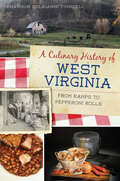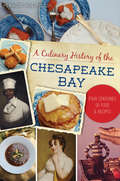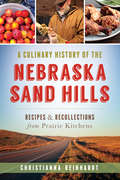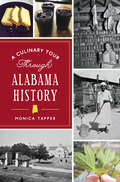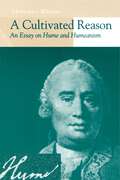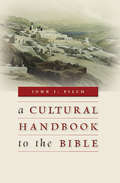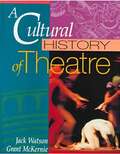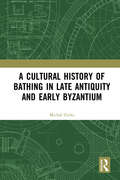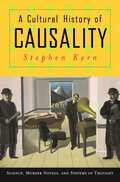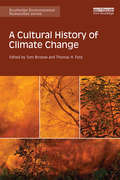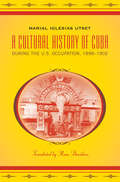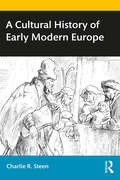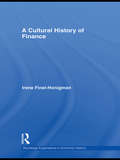- Table View
- List View
A Cuban Refugee's Journey to the American Dream: The Power of Education (Well House Books)
by Gerardo M. GonzálezIn February 1962, three years into Fidel Castro’s rule of their Cuban homeland, the González family—an auto mechanic, his wife, and two young children—landed in Miami with a few personal possessions and two bottles of Cuban rum. As his parents struggled to find work, eleven-year-old Gerardo struggled to fit in at school, where a teacher intimidated him and school authorities placed him on a vocational track. Inspired by a close friend, Gerardo decided to go to college. He not only graduated but, with hard work and determination, placed himself on a path through higher education that brought him to a deanship at the Indiana University School of Education. In this deeply moving memoir, González recounts his remarkable personal and professional journey. The memoir begins with Gerardo’s childhood in Cuba and recounts the family’s emigration to the United States and struggles to find work and assimilate, and González's upward track through higher education. It demonstrates the transformative power that access to education can have on one person’s life. Gerardo’s journey came full circle when he returned to Cuba fifty years after he left, no longer the scared, disheartened refugee but rather proud, educated, and determined to speak out against those who wished to silence others. It includes treasured photographs and documents from González’s life in Cuba and the US. His is the story of one immigrant attaining the American Dream, told at a time when the fate of millions of refugees throughout the world, and Hispanics in the United States, especially his fellow Cubans, has never been more uncertain.
A Culinary Campaign (The World At War)
by Alexis SoyerSoyer's brilliant memoir, a vivid account of the Crimean War and of Soyer's inventions and recipes for feeding armies in the field. He was as important in the Crimea as Florence Nightingale, for his influence on the reform of army feeding enabled wounded soldiers to survive. A modified version of the Soyer stove was still in use in the Gulf War. (Goodreads)
A Culinary History of Atlanta (American Palate)
by Akila Sankar McConnellDiscover iconic dishes, notorious restaurants, and the rich culinary history of this Southern city, along with fourteen delicious recipes. Atlanta&’s cuisine has always been an integral part of its identity. From its Native American agricultural roots to the South&’s first international culinary scene, food has shaped this city, often in unexpected ways. Trace the evolution of iconic dishes like Brunswick stew, hoecakes and peach pie while celebrating Atlanta&’s noted foodies, including Henry Grady, Martin Luther King Jr. and Nathalie Dupree. Be transported to the beginnings of notable restaurants and markets, including Durand&’s at the Union Depot, Busy Bee Café, Mary Mac&’s Tearoom, the Municipal Market and the Buford Highway Farmers Market. With fourteen historic recipes, culinary historian Akila Sankar McConnell proves that food will always be at the heart of Atlanta&’s story.
A Culinary History of Florida: Prickly Pears, Datil Peppers & Key Limes (American Palate Ser.)
by Joy Sheffield HarrisFlorida cuisine: twelve thousand years in the making, discover the the state's unusual and distinctive food influences and dishes. From the very first prickly pears harvested by Paleo-Indians more than twelve thousand years ago to the Seminole tribe's staple dish of sofkee, Florida's culinary history is as diverse as its geography. Influences as diverse as French, Creole, Spanish, Cuban, Greek, Mexican, Caribbean, and more season Florida's eclectic flavors. Learn how Florida orange juice changed the look of the American breakfast table and discover the state's festival-worthy swamp cabbage. Through syllabubs, perloos, frog legs and Tupelo honey, author Joy Sheffield Harris serves up a delectable helping of five hundred years of Florida cuisine--all with a side of key lime pie, of course.
A Culinary History of Iowa: Sweet Corn, Pork Tenderloins, Maid-Rites & More (American Palate Ser.)
by Darcy Dougherty MaulsbyThis volume serves up a bountiful combination of local history, classic recipes, and colorful Midwestern food lore. Iowa&’s delectable cuisine is quintessentially midwestern, grounded in its rich farming heritage and spiced with diverse ethnic influences. Classics like fresh sweet corn and breaded pork tenderloins are found on menus and in home kitchens across the state. At the world-famous Iowa State Fair, a dizzying array of food on a stick commands a nationwide cult following. From Maid-Rites to the moveable feast known as RAGBRAI, A Culinary History of Iowa reveals the remarkable stories behind Iowa originals. Find recipes for favorites ranging from classic Iowa ham balls and Steak de Burgo to homemade cinnamon rolls—served with chili, of course!
A Culinary History of Kentucky: Burgoo, Beer Cheese, & Goetta (American Palate Ser.)
by Fiona Young-BrownPull up a chair to the kitchen table and enjoy a delicious adventure through the Bluegrass State&’s food history. Kentucky&’s cuisine can be traced back to Cherokee, Irish, Scottish, English and German roots, among others. A typical Kentucky meal might have the standard meat and three, but there are many dishes that can&’t be found anywhere else. Poke sallet, despite its toxic roots and berries, is such a favorite in parts of eastern Kentucky that an annual festival celebrates it. Find recipes for dishes from burgoo to hog to moonshine and frogs. Join author Fiona Young-Brown as she details all the delectable delights sure to make the mouth water.
A Culinary History of Martha's Vineyard (American Palate)
by Thomas Dresser Joyce DresserMartha's Vineyard is known as a popular vacation destination with high profile visitors. Below the surface, however, bubbles a culinary melting pot. Native Americans, Blacks, European settlers and Azoreans all contributed to the island's diverse culinary history. The Scottish Society still celebrates Robert Burns annually with a feast. Two towns have streets called Chicken Alley for the Portuguese families who raised chickens there, while native beach plums are used to create a delicious jelly that can be found across the island. Restaurants like Giordano's and the ArtCliff Diner have been in business for more than fifty years and are still putting out great dishes. Learn the back-story of the island's first--and only--commercial vineyard. From codfish souffle to espirito santo soup, local authors Tom and Joyce Dresser share the ingredients, recipes and images of this flavorful island.
A Culinary History of Missouri: Foodways & Iconic Dishes of the Show-Me State (American Palate)
by Suzanne Corbett Deborah ReinhardtMissouri's history is best told through food, from its Native American and later French colonial roots to the country's first viticultural area. Learn about the state's vibrant barbecue culture, which stems from African American cooks, including Henry Perry, Kansas City's barbecue king. Trace the evolution of iconic dishes such as Kansas City burnt ends, St. Louis gooey butter cake and Springfield cashew chicken. Discover how hardscrabble Ozark farmers launched a tomato canning industry and how a financially strapped widow, Irma Rombauer, would forever change how cookbooks were written. Historian and culinary writer Suzanne Corbett and food and travel writer Deborah Reinhardt also include more than eighty historical recipes to capture a taste of Missouri's history that spans more than two hundred years.
A Culinary History of Mobile (American Palate)
by Christopher AndrewsJoin author Christopher Andrews on a delectable romp through the long food history of Mobile, Alabama . From its founding in 1702 by the French, Mobile has had a lot on its plate. Indeed, the story of food itself is a rich gumbo--a dish created in Mobile--tracing the city's rich history, albeit in far more filling fashion. Native, European and African traditions met and blended here. From the colonial days through the Civil War and up to the present, this history serves up a full menu for foodies and history buffs alike.
A Culinary History of Myrtle Beach & the Grand Strand: Fish & Grits, Oyster Roasts and Boiled Peanuts (American Palate)
by Becky BillingsleyThe culinary history of Georgetown and Horry Counties reflects a unique merging of Native American, European, African and Caribbean cuisines. Learn how slaves taught their masters to create vast wealth on rice plantations, what George Washington likely ate when visiting South Carolina in 1791, how the turpentine industry gave rise to a sticky sweet potato cooking method and why locals eagerly anticipate one special time of year when boiled peanuts are at their best. Author Becky Billingsley, a longtime Myrtle Beach-area restaurant journalist, digs deep into historic records, serves up tantalizing personal interviews and dishes on the best local restaurants, where many delicious farm-to-table heritage foods can still be enjoyed.
A Culinary History of Pittsburg County: Little Italy, Choctaw Beer & Lamb Fries (American Palate)
by David CatheyLong before the era of the foodie, the little coal-mining town of Krebs set the standard for celebrating food in Oklahoma. Its reputation as the Sooner State's Little Italy began in the mid-1870s when Italian immigrants chased the coal boom to Pittsburg County, deep in the heart of the Choctaw Nation. After 150 years, Italians and Choctaw neighbors are now bound by pasta, homemade cheeses and sausages and native beer once brewed illegally in basement bathtubs and delivered by children from door to door. Stop by for a steak at GiaComo's, a Choc at Pete's Place, lamb fries at the Isle of Capri, gnocchi at Roseanna's or a gourd of caciocavallo at Lovera's--venues that have proven impervious to time and hardship. Join Food Dude Dave Cathey on a tour through this colorful and delicious history.
A Culinary History of Southern Delaware: Scrapple, Beach Plums and Muskrat (American Palate)
by Denise ClemonsHistoric farms and waterways crisscross Southern Delaware, connecting its residents to a set of rich culinary traditions. The original Nanticoke inhabitants baked hearty johnnycakes and hunted wild game. Hungry for a taste of home, German settlers developed scrapple from local ingredients. Today's home cooks and chefs draw their bounty from the land and sea for a distinct, seasonal cuisine. Summer strawberries and peaches from local farms and orchards become delectable preserves thanks to treasured family recipes. Come springtime, succulent blue crab reigns supreme. With recipes for regional favorites like beach plum jelly and chicken with slippery dumplings, author Denise Clemons explores the history behind the ingredients and savors the story in every dish.
A Culinary History of West Virginia: From Ramps to Pepperoni Rolls (American Palate)
by Shannon Colaianni TinnellThe Mountain State's irregular borders and rugged geography are home to a fascinating mix of cultures, landscapes and foods. West Virginia's culinary history is rooted among the native fauna and flora that early residents hunted and foraged, and the taste of pawpaws and ramps is familiar across the state. Immigrants brought international flavors to Appalachian cuisine, resulting in local traditions like moonshine and the iconic pepperoni roll. Historian, author and West Virginia native Shannon Colaianni Tinnell explores a history that is still being written by a new generation hungry for tradition and authenticity.
A Culinary History of the Chesapeake Bay: Four Centuries of Food & Recipes (American Palate)
by Tangie HolifieldThe four hundred years since colonization have brought European, African and Asian techniques, ingredients and tastes to the Chesapeake Bay. European colonists and Africans both enslaved and free were influenced by indigenous ingredients and Native American cooking and created uniquely New World foods. The nineteenth century saw the development of industries based on the bounty of the Bay and the rising popularity of oysters, blue crab and turtle soup throughout the greater Mid-Atlantic. Waves of immigrants brought their own cuisines to the mix, and colcannon, brisket, sauerkraut and fish peppers are now found on Chesapeake tables. Local author, scientist and blogger Tangie Holifield weaves together the unique food traditions of the Bay, telling the stories of each culture that has contributed to its bounty.
A Culinary History of the Nebraska Sand Hills: Recipes & Recollections from Prairie Kitchens (American Palate)
by Christianna ReinhardtSpanning nineteen thousand square miles of central Nebraska, the Sand Hills--North America's largest sand dune--is held in place by only a thin, sturdy layer of native prairie grasses and continuing faith that the land can be made prosperous by its residents. Settlers in the area had to be hardy and resourceful, making use of what the land provided and holding fast when their hard work blew away with the prairie winds. From foraging to ranching, food meant survival, but it also meant community. Staples like fried chicken, biscuits, fruit pies, preserves and cakes all play a role in the fascinating story of the region. Join food writer Christianna Reinhardt as she dishes up the unique and tasty history of this exceptional part of the world.
A Culinary Tour Through Alabama History (American Palate)
by Monica TapperOne of the surest ways to connect with the past is to sample what was on its plate. That's the goal with this gustatory journey through Alabama history. Sweetmeats with the governor's lonely, oft-depressed wife in 1832 Greensboro. Shrimp and crabmeat casserole at a long-departed preacher's house at the Gaines Ridge Dinner Club in Camden. Pimento cheese and tea with notes of cinnamon and citrus at the Bragg-Mitchell Mansion in Mobile. Poundcake from Georgia Gilmore's kitchen in Montgomery, where workaday freedom fighters and luminaries of the civil rights movement sought sustenance. Author Monica Tapper serves up a stick-to-your-ribs trek through Alabama history, providing classic recipes modified for the modern kitchen along the way.
A Cultivated Reason: An Essay on Hume and Humeanism (G - Reference, Information and Interdisciplinary Subjects)
by Christopher WilliamsAs Plato’s tripartite division of the soul, Descartes’s criterion of clear and distinct ideas, and Kant’s notion of the categorical imperative attest, philosophy has traditionally been wedded to rationalism and its “intellectualist” view of persons. In this book Christopher Williams seeks to wean his fellow philosophers away from an overly rationalistic self-understanding by using resources that are available within the philosophical tradition itself, including some that anticipate strands of Nietzsche’s thought.The book begins by developing Hume’s critique of rationalism, with reference especially to the section of the Treatise that deals with the continuing existence of bodies (an argument that subverts intellectualist criteria by attempting to satisfy them) and to his neglected essay “The Sceptic” where Hume reveals the importance of our embodiment through a comic portrayal of philosophers’ efforts to “correct our sentiments.” Then it moves on to ward off charges of irrationalism by showing that, although our powers of self-correction are more limited than the rationalist thinks they are, a Humean position is able both to sustain a commitment to reflection and to sensitize us to a version of irrationalism, manifest in monotheistic theologies, that is otherwise difficult to detect. The book concludes, more speculatively, with a comparison of persons to artworks in order to show how our aesthetic dimension is the source of some of the normative work previously assigned to rationalist reason.Ranging as it does across subfields from epistemology and history of philosophy to ethics and aesthetics, A Cultivated Reason should appeal to a wide audience of philosophers and to scholars in other fields as well.
A Cultural Handbook to the Bible
by John J. PilchThe task of interpreting the Bible — which was written by and to people living in very different cultural contexts from contemporary Western society — can seem monumental. The opposite is also true: people can easily forget that studying the Bible is a type of cross-cultural encounter, instead reading their own cultural assumptions into biblical texts.In A Cultural Handbook to the Bible John Pilch bridges this cultural divide by translating important social concepts and applying them to biblical texts. In short, accessible chapters Pilch discusses sixty-three topics related to the cosmos, the earth, persons, family, language, human consciousness, God and the spirit world, and entertainment. Pilch's fresh interpretations of the Bible challenge traditional views and explore topics often overlooked in commentaries. Each chapter concludes with a list of useful references from cultural anthropology or biblical studies, making this book an excellent resource for students of the Bible.
A Cultural History Of Theatre
by Jack Watson Grant McKernieThis comprehensive, multicultural text presents the history of theater within a framework of cultural and social ideas.
A Cultural History of Bathing in Late Antiquity and Early Byzantium
by Michal ZytkaThis book discusses social, religious and medical attitudes towards bathing in Late Antiquity. It examines the place of bathing in late Roman and early Byzantine society as seen in the literary, historical, and documentary sources from the late antique period. The author argues that bathing became one of the most important elements in defining what it meant to be a Roman; indeed, the social and cultural value of bathing in the context of late Roman society more than justified the efforts and expense put into preserving bathing establishments and the associated culture. The book contributes a unique perspective to understanding the changes and transformations undergone by the bathing culture of the day, and illustrates the important role played by this culture in contributing to the transitional character of the late antique period. In his examination of the attitudes of medical professionals and laymen alike, and the focus on its recuperative utility, Zytka provides an innovative and detailed approach to bathing.
A Cultural History of Causality: Science, Murder Novels, and Systems of Thought
by Stephen KernThis pioneering work is the first to trace how our understanding of the causes of human behavior has changed radically over the course of European and American cultural history since 1830. Focusing on the act of murder, as documented vividly by more than a hundred novels including Crime and Punishment, An American Tragedy, The Trial, and Lolita, Stephen Kern devotes each chapter of A Cultural History of Causality to examining a specific causal factor or motive for murder--ancestry, childhood, language, sexuality, emotion, mind, society, and ideology. In addition to drawing on particular novels, each chapter considers the sciences (genetics, endocrinology, physiology, neuroscience) and systems of thought (psychoanalysis, linguistics, sociology, forensic psychiatry, and existential philosophy) most germane to each causal factor or motive. Kern identifies five shifts in thinking about causality, shifts toward increasing specificity, multiplicity, complexity, probability, and uncertainty. He argues that the more researchers learned about the causes of human behavior, the more they realized how much more there was to know and how little they knew about what they thought they knew. The book closes by considering the revolutionary impact of quantum theory, which, though it influenced novelists only marginally, shattered the model of causal understanding that had dominated Western thought since the seventeenth century. Others have addressed changing ideas about causality in specific areas, but no one has tackled a broad cultural history of this concept as does Stephen Kern in this engagingly written and lucidly argued book.
A Cultural History of Climate Change (Routledge Environmental Humanities)
by Tom Bristow Thomas H. FordCharting innovative directions in the environmental humanities, this book examines the cultural history of climate change under three broad headings: history, writing and politics. Climate change compels us to rethink many of our traditional means of historical understanding, and demands new ways of relating human knowledge, action and representations to the dimensions of geological and evolutionary time. To address these challenges, this book positions our present moment of climatic knowledge within much longer histories of climatic experience. Only in light of these histories, it argues, can we properly understand what climate means today across an array of discursive domains, from politics, literature and law to neighbourly conversation. Its chapters identify turning-points and experiments in the construction of climates and of atmospheres of sensation. They examine how contemporary ecological thought has repoliticised the representation of nature and detail vital aspects of the history and prehistory of our climatic modernity. This ground-breaking text will be of great interest to researchers and postgraduate students in environmental history, environmental governance, history of ideas and science, literature and eco-criticism, political theory, cultural theory, as well as all general readers interested in climate change.
A Cultural History of Cuba during the U.S. Occupation, 1898-1902
by Marial Iglesias UtsetIn this cultural history of Cuba during the United States' brief but influential occupation from 1898 to 1902--a key transitional period following the Spanish-American War--Marial Iglesias Utset sheds light on the complex set of pressures that guided the formation and production of a burgeoning Cuban nationalism. Drawing on archival and published sources, Iglesias illustrates the process by which Cubans maintained and created their own culturally relevant national symbols in the face of the U. S. occupation. Tracing Cuba's efforts to modernize in conjunction with plans by U. S. officials to shape the process, Iglesias analyzes, among other things, the influence of the English language on Spanish usage; the imposition of North American holidays, such as Thanksgiving, in place of traditional Cuban celebrations; the transformation of Havana into a new metropolis; and the development of patriotic symbols, including the Cuban flag, songs, monuments, and ceremonies. Iglesias argues that the Cuban response to U. S. imperialism, though largely critical, indeed involved elements of reliance, accommodation, and welcome. Above all, Iglesias argues, Cubans engaged the Americans on multiple levels, and her work demonstrates how their ambiguous responses to the U. S. occupation shaped the cultural transformation that gave rise to a new Cuban nationalism.
A Cultural History of Early Modern Europe
by Charlie R. SteenA Cultural History of Early Modern Europe examines the relationships that developed in cities from the time of the late Renaissance through to the Napoleonic period, exploring culture in the broadest sense by selecting a variety of sources not commonly used in history books, such as plays, popular songs, sketches, and documents created by ordinary people. Extending from 1480 to 1820, the book traces the flourishing cultural life of key European cities and the opportunities that emerged for ordinary people to engage with new forms of creative expression, such as literature, theatre, music, and dance. Arranged chronologically, each chapter in the volume begins with an overview of the period being discussed and an introduction to the key figures. Cultural issues in political, religious, and social life are addressed in each section, providing an insight into life in the cities most important to the creative developments of the time. Throughout the book, narrative history is balanced with primary sources and illustrations allowing the reader to grasp the cultural changes of the period and their effect on public and private life. A Cultural History of Early Modern Europe is ideal for students of early modern European cultural history and early modern Europe.
A Cultural History of Finance (Routledge Explorations In Economic History Ser.)
by Irene Finel-HonigmanThe world of finance is again undergoing crisis and transformation. This book provides a new perspective on finance through the prism of popular and formal culture and examines fascination and repulsion toward money, the role of governments and individuals in financial crises and how the Crisis of 2008, like others since 1720, repeat the same patterns of enthusiasm, greed, culpability, revulsion, reform and recovery. The book explores the political and socio-economic factors which determine fallibility and resilience in financial cultures, periods of crisis, transition and recovery based on cyclical rather than linear progression. Examining the roots of financial capitalism, in Europe and the United States and its corollary development in Asia, Russia and emerging markets proves that cultural and psychosocial reactions to financial success, endeavor and calamity transcend specific periods or events. The book allows the reader to discover parallel and intersecting reactions, controversies and resolutions in the cultural history of financial markets and institutions.
